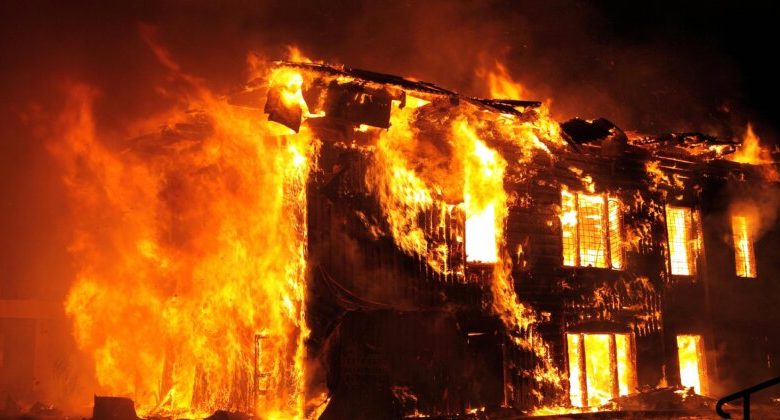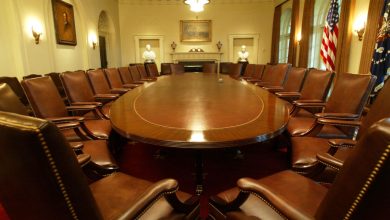How to Protect Your Home Against Fires

House fires don’t often occupy our minds until we find ourselves faced with the reality of being a victim of one. Losing your house by a rabid house fire is a devastating feeling, especially if you’re well aware that you haven’t done all you could have to minimize the damage.
To avoid this sense of regret, it’s important to take proactive measures to prevent your house from catching fire altogether. This involves taking a few critical steps and following key safety protocols to secure the premises.
While fireproofing a house is a major undertaking, it’s essential to ensure that you’ve equipped your home with the right fire safety measures to safeguard you and your family.
If you’re wondering what steps to take to protect your home against fires, you’ve come to the right place. In this article, we’ll outline a few strategies that can help you prevent unwanted fires from ravaging your property.
Fires can happen when we least expect it. If you’re still in the process of constructing your house, or if you’re interested in renovating your house, constructing rooms and other house parts with fire resistant material is a good step to enhance fire safety.
Examples of fire-resistant materials include brick, concrete, tiles, slates, asphalt, and aluminium. Using these materials in your wall, floor, and roofing can significantly reduce the chances of a fire spreading around and beyond your house.
Furthermore, if you do choose to use flammable materials like wood paneling and sidings, make sure that it’s treated with a flame retardant to keep it from catching fire. This will help in reducing the combustibility of the materials in the house, thus leading to better home protection.
In addition, using fire-resistant doors and windows can also help in containing the fire in specific zones in the house. Make sure they’re fire-rated and fortified with fire-resistant materials. This way, your house will have a better shot at remaining structurally sound even if a spread has burned through a single room.
Another way to fireproof your apartment or house is by setting up smoke alarms in each room of your house. While the cost of installing a smoke alarm system can be offputting to people with tight budgets, it beats going home to a massively damaged and burnt home.
If you want to de risk your home and make it less of a fire hazard, be sure to be thorough when putting up smoke alarms around the house.
Don’t just put install it in high-risk areas like the kitchen and storage room. Put them in your bedroom, bathroom, hallways, and living room quarters too. Stray fires coming from shorted plugs or neglected candles can damage these spaces—so it’s best to cover as much ground as you can.
Also, take the time to test the fire alarm system and change the batteries annually. You can develop peace of mind by taking a few minutes a year to verify that the systems are fully operational. This can also ensure that your house is truly safe from the potential damage caused by a sudden fire outbreak.
This is a no-brainer, but it can’t be stressed enough: keep flammable materials away from hot or heat-igniting objects.
There are many heat-emitting appliances around the house. Candles, stoves, heaters, radiators, and fireplaces all have flame-inducing properties, and they can easily turn into firestarters when exposed under the wrong conditions.
Having said that, it’s crucial to ensure that flammable materials are kept away from these heat sources. This is so that you can curb the chances of these things accidentally catching on fire.
A lot of things can be classified as flammable materials. These include papers, towels, mitts, untreated wood furniture, and curtains, which may commonly catch fire and spread to other objects.
The ideal distance to set between heat sources and flammable objects is at least three feet. This distance ensures that even sudden bursts of fire won’t be able to reach the object in question. That said, the more space you can separate from these two objects, the better it is for ensuring fire safety.
Another way to reduce fire damage is by keeping flammable goods in the appropriate storage cabinets. Proper storage of hazardous goods like gasoline isn’t merely a recommendation, it’s a must if you want to be in compliance with Australian laws.
These cabinets are built to withstand high temperatures thanks to their durable steel construction. They also come with features like self-closing mechanisms and spill containment features, making them excellent for protecting your property. The exterior of this product also has a hazard signage to signal its dangers to the public.
Fortunately, you don’t have to search beyond local retailers for these designated cabinets. There are a plethora of designated flammable storage cabinets that can be used to store Class 3 Flammable Liquids like paints, fuel, diesel, kerosene, and methanol online or in local retailers.
Just be sure that your chosen storage cabinet is built to offer compliant protection against Class 3 Flammable Liquids. This way, you’ll effectively minimise the chances of a combustible reaction and a fire breaking out in your home due to unmonitored heat exposure reacting with your dangerous goods.
While fire prevention is the best course of action, it’s not something every household can guarantee. Fires can and do happen, even if you’ve done your best to prevent it.
Many housefires are so quick and fast-moving, you’ll barely have time to make it out of your house on time. You wouldn’t want to be a deer in the headlights when this happens; you want to be prepared.
Conducting regular fire drills with your family can help you all know how to react before an actual fire happens. This fire drill should be comprehensive with everyone being on the same page regarding the final meeting point. Ideally, you and your family do these escape drills twice a year.
In these fire drills, you should inform your family about finding exits around the house, risk assessment on bringing things or not (in most cases, you can leave behind things), and whether it’s safe to come back in the house or not after the fire. You should also inform them of the number of first respondents in your area.
If your house has a fire extinguisher, use these fire drill sessions as an opportunity to teach them how to use it. This skill can come in handy if the real things do occur.
One of the common causes of house fires is faulty electrical wiring. These electrical issues tend to be overlooked as signs of damage aren’t easy to spot. For a clear assessment, it’s best to talk to an electrician and have them inspect your house and rooms for peace of mind.
Things to watch for when evaluating potential electric wiring damage are a warm outlet, frayed wires, and flickering light bulbs. Moreover, if you overload your circuits with too many electrical appliances, you can also increase the risk of fires.
Some old houses have outdated electrical codes. If you’re living in such a house, it’s best to upgrade your electrical system to stay in line with the standards of modern times. This way, you can reduce the risk of electric short circuits and keep your family and home safe.




